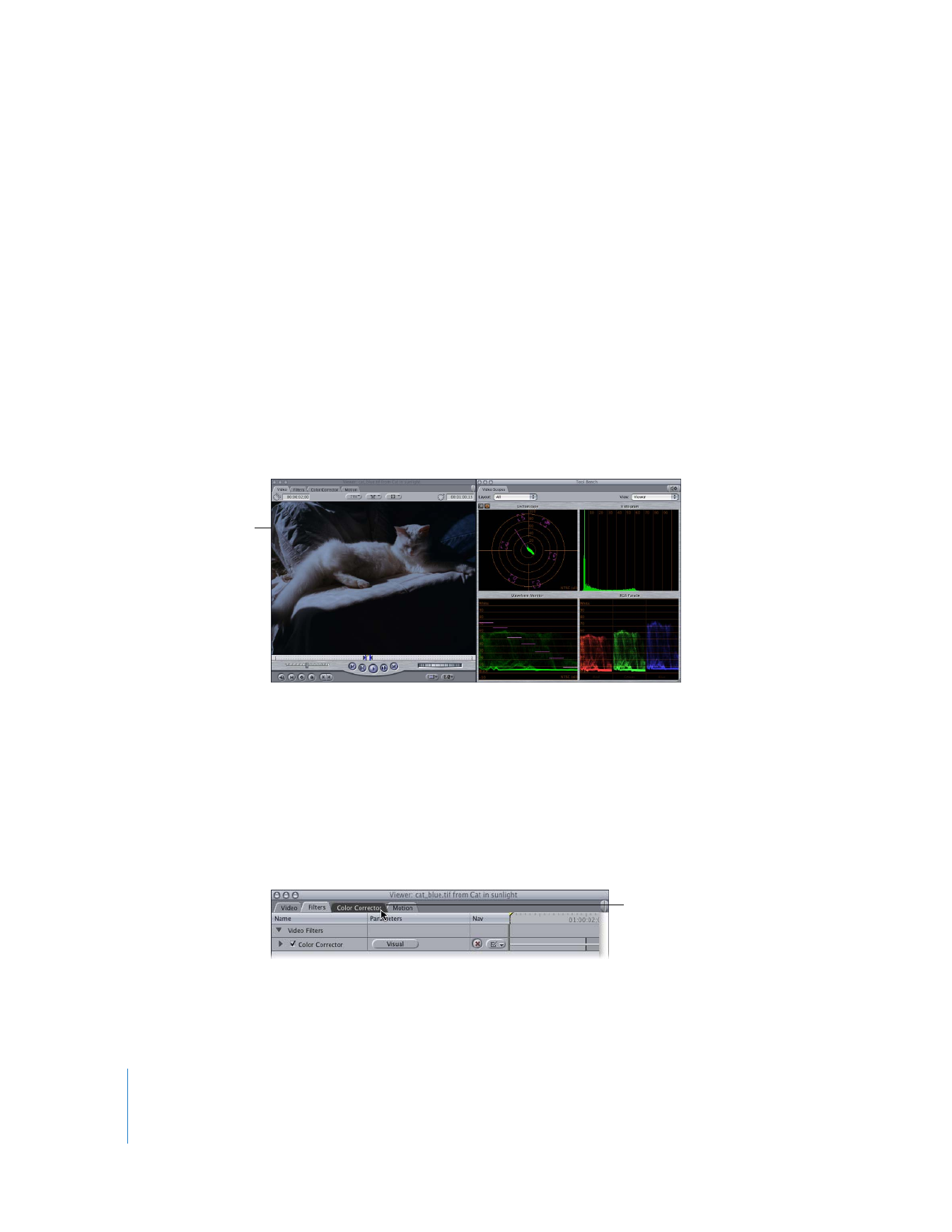
Level and Saturation Controls in the Color Corrector Filter
The level sliders allow you to adjust the levels of the whites, midtones, and blacks in
your clip to adjust the contrast of your image. The first step when color correcting one
clip to match another is to adjust its overall luma levels to match those of the other.
Only after doing this are you able to adjust the colors appropriately and achieve the
results you want. The Saturation slider lets you increase or decrease the intensity of the
color in your image.
 Whites slider: Drag this slider to adjust the maximum level of white in the affected
clip. To move the slider in increments, click the small arrows to the right or left of the
slider. Moving the slider to the left lowers the maximum white level (letting you
bring the whites in overexposed clips down to a more acceptable level, for example).
 Mids slider: Drag this slider to adjust the average distribution of values in between
white and black in the affected clip. To move the slider in increments, click the small
arrows to the right or left of the slider. You can use this slider to adjust the midtones
of your image, increasing or decreasing the apparent contrast of your image without
washing out the whites or blacks. For example, you could manipulate the Mids slider
to bring out detail in shadowed areas of your clip.
 Blacks slider: Drag this slider to adjust the minimum level of black in the affected clip,
deepening or reducing the level of absolute black in your image. To move the slider
in increments, click the small arrows to the right or left of the slider.
 Saturation (Sat) slider: This slider raises or lowers the overall saturation, or intensity of
color, in the affected clip. Drag the slider all the way to the left to desaturate the
color from the clip completely. This results in a grayscale image. Drag the slider to the
right to increase the saturation of color in the affected clip. To move the slider in
increments, click the small arrows to the right or left of the slider.
Note: Be very careful when raising the saturation of a clip using the Saturation slider.
It is very easy to raise the saturation too high, resulting in saturation values that are
illegal for broadcast. Never adjust the saturation of clips based on how they appear
on your computer display. NTSC and PAL video never look as vivid on a computer
display as they do on a properly calibrated broadcast video monitor, and it’s often
tempting to overcompensate when basing your adjustments on a computer display.
It’s a good idea to enable the Excess Chroma option (in the Range Check submenu of
the View menu) to warn you when you’re boosting the saturation too much. For
more information, see “
The Importance of Using a Properly Calibrated Broadcast
Monitor
” on page 553 and “
Displaying Excess Luma and Chroma Levels
in the Viewer and Canvas
” on page 524.

574
Part III
Color Correction and Video Quality Control